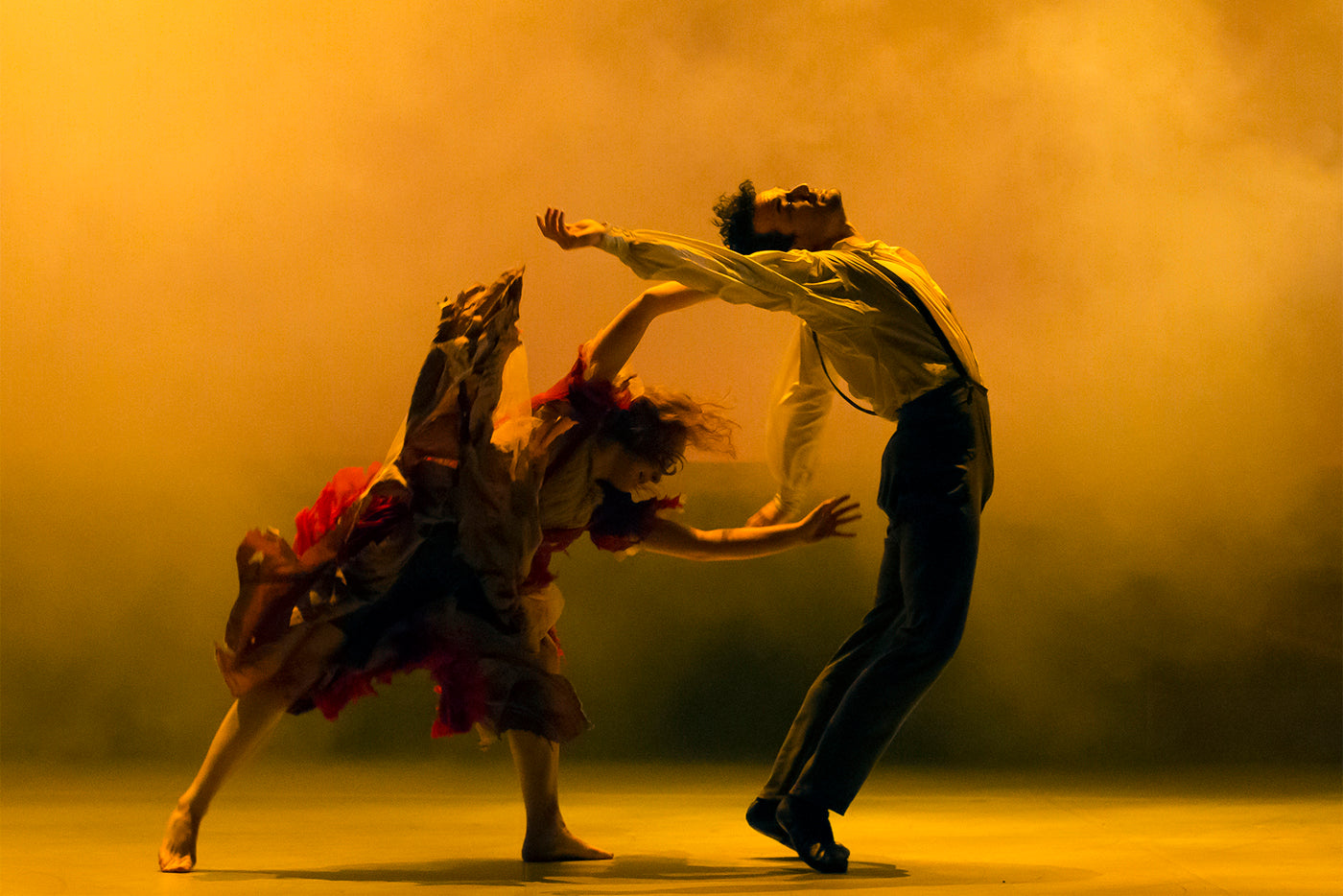The first act sees a young Jane, danced by Antoinette Brooks-Daw, cope with the hardships of her early life—from the loss of her parents and her mistreatment at the hands of her aunt and cousins, to the death of her friend at the charitable school she is sent to. Brooks-Daw’s expressive dancing is a joy to watch and she aptly captures Jane’s resilient, strong-willed spirit with her sharp and passionate movement. It’s a character trait that allows Jane to cope with the grief and sorrow of her upbringing and this steely independence is undoubtedly what has endeared Brontë’s much-loved character to many readers. Northern Ballet’s adaptation draws on this, expertly catching at the essence of its characters. As we switch to the older Jane (danced by Dreda Blow), although calmer in her demeanour this independence of spirit, so key to her character, remains.
When the older Jane leaves the school for her new position as governess at Thornfield, the scene is set for the novel’s famous love story to unfold. Here, Marston's choreography comes into its own revealing her skill as a storyteller. In one of the neat choreographic tricks woven into this narrative, the proud and dashing Rochester (in which Javier Torres is perfectly cast) stops Jane from leaving with a flick of his foot, a gesture full of cool disdain and control. It’s a simple action, but one that brings his character to life —and a moment which adds a light-hearted touch to what is often a sombre story. The gesture is echoed by Jane in their interactions with each other. She too asserts her subtle control over Rochester with a touch of her foot, tripping him mid-step with a playful nudge to his ankles. In the closing scenes this initial battle for authority morphs into a tender image of their affection. As Jane returns to offer her love to the blind and broken Rochester it is through an echo of these gestures that Rochester recognises her presence.
The characters throughout this production have been carefully created and are brilliantly cast, the company’s ability as actors equal to their skill as dancers. At Thornfield we encounter Rochester’s charming, excitable ward (Rachael Gillespie) and Mrs Fairfax, the chatty housekeeper, performed superbly by Pippa Moore. A character that is never still, her quick, juddering movements hint at her talkative and nervously energetic nature.
Northern Ballet's adaptation flits through Brontë’s story but nonetheless it is condensed well. It sticks close to the novel, the only ‘gimmick’ an ensemble of ‘D-men,’ a group of imaginative figures whose presence appears to symbolise a character’s emotional distress. Yet with choreography that focuses on the emotions of its story, especially the uncertainty of the blossoming relationship between Jane and Rochester, this ensemble resist cliché and instead become a dark, menacing presence; a succinct form in which to embody the complex emotions of the story’s characters.
The duets between Jane and Rochester beautifully capture the conflict between their internal longings and the disparity of their social status. An initial sense of hesitation and propriety, their passing bodies reluctant to make any significant contact, slowly gives way to leans and lifts as they are drawn to one other, their bodies connecting in a tender mix of support and desire.
The story ends in a glowing orange blaze of light and smoke, Rochester battling with Victoria Sibson's fabulously mad, lustful Bertha in a frantic sequence of swirling lifts. The rapid pace of the scenes in act two lead the story quickly to this point, from Jane and Rochester’s disastrous wedding, to her ensuing time spent with the Reverend St. John Rivers and his sisters, to her final return to Thornfield in the aftermath of Bertha’s destruction. At this point it is beneficial to know the story, but even without any detailed knowledge of the original novel the characters feelings are so clearly conveyed that, once you’ve established who’s who, the unfolding story is easily understood.
Northern Ballet’s “Jane Eyre” is perfectly placed; short, clear and never overdone. They are a company that can act as brilliantly as they can dance and this allows for a performance of masterful storytelling, in which dance and emotion are elegantly expressed. In the year that marks the 200th anniversary of Brontë’s birth this production by the Leeds-based company is a fitting celebration of the Yorkshire author's most famous work.




comments